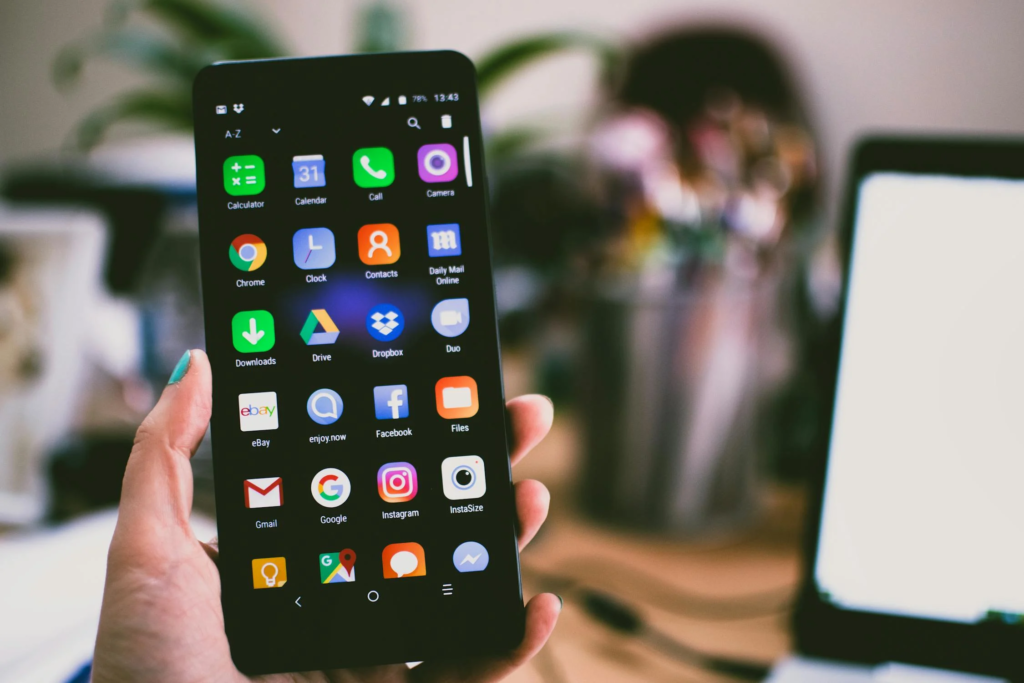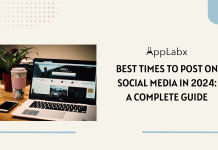Key Takeaways
- Strategic Keywords: Discover how strategic keyword placement in mobile app titles enhances visibility, attracting users actively searching for relevant apps.
- Brand Recognition: Learn to balance brand identity with keyword optimization to establish a strong presence in the app marketplace, fostering trust and recognition among users.
- Continuous Optimization: Understand the importance of continuous monitoring and iteration of app titles, leveraging ASO tools to adapt and stay ahead of evolving market trends for sustained downloads growth.
In the vast and ever-evolving landscape of mobile applications, where millions of apps vie for users’ attention, mastering the art of App Store Optimization (ASO) has become imperative for developers and marketers alike.
Among the myriad of ASO techniques, one aspect stands out as a cornerstone of success: the mobile app title.
In this comprehensive guide, we delve deep into the intricacies of crafting compelling app titles that not only attract users but also skyrocket downloads.

As the digital marketplace continues to burgeon with new apps emerging daily across various categories, the competition for visibility has reached unprecedented levels.
Simply launching an app is no longer sufficient to guarantee success; it must be strategically positioned and meticulously optimized to stand out amidst the sea of offerings.
This is where ASO comes into play, serving as the beacon that guides users to discover and engage with your app.
At the heart of ASO lies the optimization of several key elements, including app titles, keywords, descriptions, icons, screenshots, and reviews.
However, the app title holds particular significance due to its prominence in app store search results and its pivotal role in shaping users’ first impressions.
A well-crafted title can captivate users’ attention, convey the app’s value proposition, and entice them to click through and explore further.
The importance of app titles in ASO cannot be overstated.
Studies have consistently shown a direct correlation between optimized titles and increased app visibility, higher rankings, and ultimately, greater downloads.
In fact, research indicates that apps with keyword-rich titles tend to rank higher in search results and experience significantly higher download rates compared to those with generic or poorly optimized titles.
But crafting an effective app title is no simple task.
It requires a delicate balance of creativity, relevance, and strategic keyword placement.
Moreover, with the proliferation of apps in multiple languages and regions, considerations such as localization and cultural nuances further complicate the optimization process.
In this guide, we aim to demystify the art of crafting compelling app titles by providing actionable insights, best practices, and real-world examples.
Whether you’re a seasoned app developer seeking to optimize your existing titles or a novice entrepreneur preparing to launch your debut app, this comprehensive resource will equip you with the knowledge and tools necessary to navigate the intricacies of ASO and propel your app to success.
Throughout the following sections, we’ll explore the fundamental principles of effective title optimization, delve into advanced strategies for maximizing visibility and engagement, analyze case studies of successful (and not-so-successful) app titles, and provide practical tips for leveraging ASO tools and resources to gain a competitive edge in the crowded app marketplace.
So buckle up and prepare to embark on a journey into the dynamic world of ASO mobile app titles.
By the time you reach the end of this guide, you’ll possess the expertise and confidence to craft titles that not only attract users but also propel your app to the upper echelons of app store rankings, driving downloads and fostering long-term success.
Let’s dive in.
Before we venture further, we like to share who we are and our digital experiences.
About AppLabx
From developing a solid marketing plan to creating compelling content, optimizing for search engines, leveraging social media, and utilizing paid advertising, AppLabx offers a comprehensive suite of digital marketing services designed to drive growth and profitability for your business.
AppLabx is well known for helping companies and startups use ASO to drive traffic to their websites and web apps.
At AppLabx, we understand that no two businesses are alike. That’s why we take a personalized approach to every project, working closely with our clients to understand their unique needs and goals, and developing customized strategies to help them achieve success.
If you need a digital consultation, then send in an inquiry here.
ASO Mobile App Titles: How to Attract Users and Boost Downloads
- Understanding the Importance of Mobile App Titles in ASO
- Best Practices for Crafting Compelling Mobile App Titles
- Tools and Resources for Optimizing Mobile App Titles
1. Understanding the Importance of Mobile App Titles in ASO
In the complex ecosystem of mobile app marketing, where visibility and discoverability are paramount, the app title serves as the gateway to attracting users and driving downloads.
Let’s delve into why optimizing your app title is crucial for ASO success:
Impact on Visibility and Discoverability:
- Search Rankings: App titles play a pivotal role in determining an app’s ranking in search results within app stores. Titles containing relevant keywords are more likely to appear prominently when users search for related terms.
- Example: A fitness app titled “Fitness Tracker: Track Your Workouts” is more likely to rank higher for searches related to fitness tracking compared to a generic title like “Get Fit Now.”
- App Store Algorithms: App store algorithms consider various factors when determining search rankings, including app title relevance, keyword density, and user engagement metrics. Optimizing your title increases the likelihood of your app being surfaced to potential users.
- Example: Apps with titles closely aligned with popular search queries are favored by app store algorithms, resulting in higher visibility and increased organic downloads.

First Impression and Brand Perception:
- User Attention: With thousands of apps competing for attention, users make split-second decisions based on app titles to determine relevance and value. A compelling title captures users’ attention and encourages them to explore further.
- Example: An app titled “QuickRecipes: Easy Cooking Ideas” immediately communicates its value proposition to users seeking quick and easy recipe solutions, making it more likely to be clicked on.
- Brand Recognition: App titles play a crucial role in brand recognition and recall. A well-crafted title incorporates brand identity while conveying the app’s purpose, helping to establish a strong brand presence in the minds of users.
- Example: “Nike Training Club” not only reflects the app’s focus on fitness training but also leverages the established brand equity of Nike, instilling confidence and trust in users.
User Experience and Relevance:
- Clarity and Relevance: A concise and descriptive title communicates the app’s core features and functionality, enhancing user comprehension and reducing ambiguity. Users are more likely to download apps with titles that align with their needs and expectations.
- Example: “Uber Eats: Food Delivery” clearly communicates the app’s primary function, making it instantly recognizable to users seeking food delivery services.
- Localization and Cultural Sensitivity: Tailoring app titles to specific regions and languages enhances relevance and resonance with target audiences. Localized titles resonate more with users and improve the app’s chances of success in international markets.
- Example: The app “Duolingo” adapts its title to different languages (e.g., “Duolingo: Aprende Inglés” in Spanish), ensuring that it remains culturally relevant and accessible to diverse global audiences.
Competitive Advantage and Differentiation:
- Standing Out in the Crowd: In a saturated app marketplace, a unique and memorable title sets your app apart from competitors and increases its chances of being noticed by users. A distinctive title can pique curiosity and drive user engagement.
- Example: “Candy Crush Saga” stands out among puzzle games with its whimsical title, attracting players with its playful and addictive gameplay experience.
- Keyword Optimization: Strategic keyword placement in the title improves the app’s visibility for relevant search queries and increases its chances of being discovered by users actively seeking similar apps.
- Example: An app titled “BudgetTracker: Expense Manager” strategically incorporates keywords related to budgeting and expense management, making it more likely to appear in search results for those terms.
2. Best Practices for Crafting Compelling Mobile App Titles
Crafting an effective app title requires a blend of creativity, relevance, and strategic keyword optimization.

Follow these best practices to ensure your app title captivates users’ attention and drives downloads:
Clear and Concise:
- Simplicity: Keep the title concise and easy to understand. Avoid using overly complex or ambiguous language that may confuse users.
- Example: “Todoist: To-Do List & Tasks” succinctly communicates the app’s purpose without unnecessary embellishment.
- Avoid Jargon: Steer clear of industry-specific jargon or acronyms that may not be familiar to the average user. Opt for simple and straightforward language that resonates with your target audience.
- Example: “WhatsApp Messenger” effectively conveys the app’s function without relying on technical terminology.
Keyword Optimization:
- Relevance: Incorporate relevant keywords that accurately describe your app’s features, functionality, and target audience. Choose keywords with high search volume and low competition to maximize visibility.
- Example: “Strava: Run, Ride, Swim” includes keywords related to fitness activities, making it more discoverable to users searching for exercise tracking apps.
- Strategic Placement: Place primary keywords at the beginning of the title to ensure they are prominently displayed in search results. Avoid keyword stuffing and maintain readability by limiting the number of keywords.
- Example: “Evernote: Take Notes, Plan, Organize” strategically places the primary keyword “Evernote” at the beginning, followed by descriptive keywords.
Branding:
- Brand Identity: Incorporate your brand name into the title to strengthen brand recognition and foster trust with users. Balance brand identity with relevant keywords to ensure the title accurately reflects the app’s purpose.
- Example: “Google Maps: Navigate & Explore” seamlessly integrates the Google brand while highlighting the app’s navigation features.
- Consistency: Maintain consistency across all branding elements, including app title, icon, and description, to create a cohesive brand experience for users. Consistent branding reinforces brand recall and enhances user trust.
- Example: “Netflix: Watch TV Shows & Movies Online” maintains consistent branding with the Netflix logo and color scheme across all platforms.
Localization:
- Cultural Sensitivity: Adapt app titles to suit the cultural preferences and linguistic nuances of target markets. Localized titles resonate more with users and improve the app’s chances of success in international markets.
- Example: “Tinder: Match. Chat. Date.” tailors its title to different languages and regions while maintaining brand consistency and relevance.
- Keyword Translation: Translate keywords into the local language to improve search visibility and ensure the title aligns with users’ search queries. Consider cultural connotations and preferences when selecting translated keywords.
- Example: “Instagram” translates its app title into various languages while retaining its brand identity and recognizable iconography.
Avoiding Spammy Tactics:
- Misleading Titles: Avoid using misleading or clickbait titles that overpromise or misrepresent the app’s features. Transparency and honesty build trust with users and encourage long-term engagement.
- Example: An app titled “Free iPhone X Giveaway” that offers no real value or functionality may attract initial downloads but ultimately disappoint users.
- Keyword Stuffing: Resist the temptation to overload the title with excessive keywords in an attempt to improve search rankings. Keyword stuffing not only detracts from the user experience but also violates app store guidelines.
- Example: A title like “Fitness Workout Gym Tracker – Running Yoga Weight Loss Exercise App” appears spammy and detracts from the app’s credibility.
3. Tools and Resources for Optimizing Mobile App Titles
Effective optimization of mobile app titles requires access to the right tools and resources to conduct keyword research, analyze competitors, and track performance.
Also, read our top guide on the Top 8 App Store Optimization (ASO) Tools and Software.
Explore these essential tools and resources to enhance your ASO efforts:
ASO Platforms and Tools:
- App Annie: A comprehensive ASO platform that provides insights into app store trends, keyword rankings, and competitor analysis. Data.ai offers a suite of tools for optimizing app titles, descriptions, and keywords to improve visibility and downloads.
- Example: Use Data.ai to identify high-performing keywords and track changes in keyword rankings over time to inform title optimization strategies.
- Sensor Tower: An ASO tool that offers keyword research, competitor analysis, and app performance tracking features. Sensor Tower provides valuable data on search volume, competition level, and keyword difficulty to help optimize app titles for maximum impact.
- Example: Utilize Sensor Tower’s keyword suggestion tool to discover new keywords and identify gaps in your app’s keyword strategy.

Keyword Research Tools:
- Google Keyword Planner: A free tool by Google that provides insights into keyword search volume, competition, and trends. Google Keyword Planner helps identify relevant keywords for optimizing app titles and descriptions based on user search behavior.
- Example: Use Google Keyword Planner to discover popular search queries related to your app’s niche and integrate them into your title for improved search visibility.
- Ubersuggest: A keyword research tool that offers keyword suggestions, search volume data, and competitive analysis. Ubersuggest provides valuable insights into long-tail keywords and related search terms to optimize app titles for niche audiences.
- Example: Leverage Ubersuggest to identify less competitive keywords with high search volume and incorporate them strategically into your app title for better discoverability.
Competitor Analysis Tools:
- Mobile Action: A competitive intelligence platform that offers insights into competitors’ app titles, keywords, and performance metrics. Mobile Action enables you to benchmark your app against competitors and identify opportunities for optimization.
- Example: Analyze competitors’ app titles and keyword strategies to uncover patterns and identify areas for improvement in your own title optimization efforts.
- AppFollow: A tool that provides app store optimization, user review monitoring, and competitor analysis features. AppFollow offers insights into competitors’ app titles, descriptions, and keyword rankings to inform your own ASO strategy.
- Example: Track changes in competitors’ app titles and keyword rankings over time to stay ahead of industry trends and adapt your optimization strategy accordingly.
Resources and Guides:
- Apple App Store Optimization Guide: Apple’s official guide to app store optimization provides valuable insights and best practices for optimizing app titles, descriptions, and keywords. The guide offers actionable tips and recommendations for improving app visibility and downloads on the App Store.
- Example: Consult Apple’s ASO guide for guidance on crafting effective app titles that resonate with iOS users and comply with App Store guidelines.
- Google Play Developer Console: Google’s developer console offers resources and guides for optimizing app titles, descriptions, and metadata on the Google Play Store. The console provides insights into search performance, user engagement, and app visibility metrics to inform ASO strategies.
- Example: Explore the Google Play Developer Console for tips on optimizing app titles for Android users and maximizing visibility in the Google Play Store.

Community Forums and Blogs:
- ASO Stack Exchange: A community-driven Q&A platform dedicated to app store optimization and mobile marketing. ASO Stack Exchange allows developers and marketers to ask questions, share insights, and exchange best practices related to app title optimization and ASO strategies.
- Example: Participate in discussions on ASO Stack Exchange to gain valuable insights from industry experts and learn from the experiences of other app developers and marketers.
- MobileDevHQ Blog: A blog that offers insights, tips, and best practices for app store optimization and mobile marketing. MobileDevHQ covers topics such as keyword research, competitor analysis, and title optimization to help developers and marketers improve their app’s visibility and downloads.
- Example: Read articles on the MobileDevHQ blog for actionable tips and case studies on optimizing app titles for different platforms and app categories.
Conclusion
Congratulations on reaching the conclusion of our in-depth exploration into the world of ASO mobile app titles.
Throughout this guide, we’ve delved deep into the intricacies of crafting compelling titles that not only attract users but also boost downloads and propel your app to success in the competitive mobile marketplace.
From understanding the pivotal role of mobile app titles in ASO to exploring best practices, tools, and resources for optimization, we’ve covered a wealth of valuable insights and actionable strategies to help you navigate the complexities of app store optimization with confidence and expertise.
Recap of Key Takeaways:
- Significance of App Titles: App titles serve as the gateway to attracting users and driving downloads. Optimized titles improve visibility, enhance user engagement, and establish brand identity in the crowded app marketplace.
- Best Practices for Crafting Titles: Clear and concise titles, strategic keyword optimization, effective branding, localization, and avoiding spammy tactics are essential for creating compelling app titles that resonate with users and boost discoverability.
- Tools and Resources for Optimization: Leveraging ASO platforms, keyword research tools, competitor analysis tools, official guides, and community forums empowers you to make informed decisions and optimize app titles for maximum impact.
Next Steps: Implementing Your Learnings
Now that you’re equipped with a comprehensive understanding of ASO mobile app titles and the strategies for optimization, it’s time to put your knowledge into action.
Here are some actionable steps you can take to enhance your app’s visibility and drive downloads:
- Audit Your Existing Titles: Review and analyze your current app titles to identify areas for improvement. Consider factors such as clarity, relevance, keyword placement, and branding consistency.
- Conduct Keyword Research: Utilize keyword research tools to identify high-volume, low-competition keywords relevant to your app’s niche. Integrate these keywords strategically into your title to improve search visibility and attract users.
- Optimize for Localization: Tailor your app titles to suit the cultural preferences and linguistic nuances of target markets. Translate keywords and adapt titles to different languages and regions to enhance relevance and resonance with local audiences.
- Monitor and Iterate: Continuously monitor the performance of your app titles using ASO platforms and analytics tools. Track keyword rankings, user engagement metrics, and download rates to identify areas for optimization and iterate on your title strategy accordingly.
Continuing Your ASO Journey
As you embark on your ASO journey, remember that app store optimization is an ongoing process that requires continuous refinement and adaptation to changing market dynamics.
Stay informed about industry trends, algorithm updates, and best practices through blogs, forums, and official resources to stay ahead of the curve.
By applying the principles and techniques outlined in this guide, you’ll not only attract users and boost downloads but also establish a strong foundation for long-term app success.
Whether you’re a seasoned app developer or a budding entrepreneur, mastering ASO mobile app titles is the key to unlocking the full potential of your app and reaching new heights of growth and visibility in the dynamic world of mobile technology.
Thank you for joining us on this journey, and we wish you the utmost success in your ASO endeavors.
If you are looking for a top-class digital marketer, then book a free consultation slot here.
If you find this article useful, why not share it with your friends and business partners, and also leave a nice comment below?
We, at the AppLabx Research Team, strive to bring the latest and most meaningful data, guides, and statistics to your doorstep.
To get access to top-quality guides, click over to the AppLabx Blog.
People also ask
How do app titles impact ASO?
App titles influence app store search rankings and user perception, making them a crucial factor in attracting users and boosting downloads.
What are the key elements of a compelling app title?
A compelling app title is clear, concise, and incorporates strategic keywords while maintaining brand identity and relevance to the target audience.
How can I optimize my app title for keywords?
Conduct keyword research to identify relevant terms with high search volume and low competition. Incorporate these keywords strategically into your app title for maximum visibility.
Why is branding important in app titles?
Branding helps establish trust and recognition with users. Balancing brand identity with keyword optimization ensures your app stands out while conveying its unique value proposition.
What are some common mistakes to avoid when crafting app titles?
Avoid keyword stuffing, using misleading titles, or neglecting localization. These practices can harm your app’s visibility and credibility in the app store.
How can I localize my app title for different regions?
Translate your app title into the local language and adapt it to cultural preferences and linguistic nuances. Localization enhances relevance and resonance with diverse audiences.
What role does user experience play in app titles?
Clear and relevant app titles enhance user comprehension and reduce ambiguity, improving the overall user experience. A well-crafted title sets expectations and attracts engaged users.
How can I stand out from competitors with my app title?
Focus on creating a unique and memorable title that reflects your app’s value proposition and sets it apart from competitors. Avoid generic titles and strive for differentiation.
What tools can I use to optimize my app title?
Explore ASO platforms, keyword research tools, and competitor analysis tools to inform your title optimization strategy. These tools provide valuable insights and data-driven recommendations.
Why is continuous optimization important for app titles?
The app marketplace is dynamic, with user preferences and search trends constantly evolving. Continuous optimization allows you to adapt to these changes and maintain visibility and relevance.
How do I know if my app title is effective?
Monitor key metrics such as keyword rankings, search impressions, and download rates to assess the performance of your app title. Adjust your strategy based on data-driven insights to maximize effectiveness.
What are some best practices for keyword placement in app titles?
Place primary keywords at the beginning of the title to ensure they are prominently displayed in search results. Avoid keyword stuffing and prioritize readability while incorporating keywords.
Can I change my app title after launch?
Yes, you can update your app title after launch, but it’s essential to consider the potential impact on existing users, branding consistency, and app store guidelines. Proceed with caution and test changes carefully.
How can I ensure my app title complies with app store guidelines?
Review the app store guidelines for title optimization and avoid practices that violate their policies, such as misleading titles or keyword stuffing. Adhering to guidelines helps maintain your app’s credibility and visibility.
Should I include my app’s features in the title?
While it’s essential to convey your app’s core features and functionality, prioritize clarity and relevance over cramming too much information into the title. Focus on capturing the essence of your app in a concise manner.
How can I track the performance of my app title?
Utilize app analytics tools and ASO platforms to track key performance indicators such as keyword rankings, search impressions, and conversion rates. Regular monitoring allows you to assess the effectiveness of your title and make data-driven optimizations.
What is the role of app icons in conjunction with app titles?
App icons complement app titles by providing visual cues and reinforcing brand identity. Consistent branding across app titles and icons enhances recognition and strengthens your app’s overall presence in the marketplace.
How can I conduct effective keyword research for my app title?
Start by brainstorming relevant keywords and then use keyword research tools to evaluate their search volume, competition, and relevance. Choose keywords that align with your app’s niche and target audience for optimal results.
Can I test different app titles to see which performs better?
Yes, you can conduct A/B tests or split tests to compare the performance of different app titles. Experiment with variations in keywords, branding elements, or messaging to identify the most effective title for your app.
How can I optimize my app title for voice search?
Consider natural language queries and
conversational phrases when optimizing your app title for voice search. Focus on long-tail keywords and colloquial language that users are likely to use when speaking aloud.
Are there any guidelines for character limits in app titles?
While character limits may vary depending on the app store platform, aim to keep your app title concise and within the recommended character limit. Avoid unnecessary words or characters that detract from the clarity and readability of your title.
How can I leverage user feedback to improve my app title?
Monitor user reviews and feedback to gain insights into how users perceive your app title. Address any common concerns or suggestions for improvement and iterate on your title based on user input to enhance its effectiveness.
What role does emotional appeal play in app titles?
Emotional appeal can evoke curiosity, excitement, or a sense of urgency, prompting users to engage with your app. Incorporate emotional triggers or compelling language in your title to resonate with users on a deeper level.
How often should I revisit and update my app title?
Regularly revisit and evaluate your app title to ensure it remains relevant and aligned with your app’s value proposition. Consider updating your title in response to changes in market dynamics, user feedback, or competitive landscape.
How can I optimize my app title for maximum visibility in app store search results?
Focus on including relevant keywords, prioritizing clarity and readability, and differentiating your app from competitors. Regularly monitor keyword rankings and search trends to make data-driven optimizations and maintain visibility.
Can I use special characters or emojis in my app title?
While some app stores may allow special characters or emojis in app titles, use them sparingly and ensure they enhance rather than detract from your title’s readability and professionalism. Consider the potential impact on search visibility and user perception before incorporating them.
How can I ensure my app title resonates with my target audience?
Understand your target audience’s needs, preferences, and pain points. Tailor your app title to address their specific interests and aspirations, using language and messaging that resonates with their emotions and motivations.




































